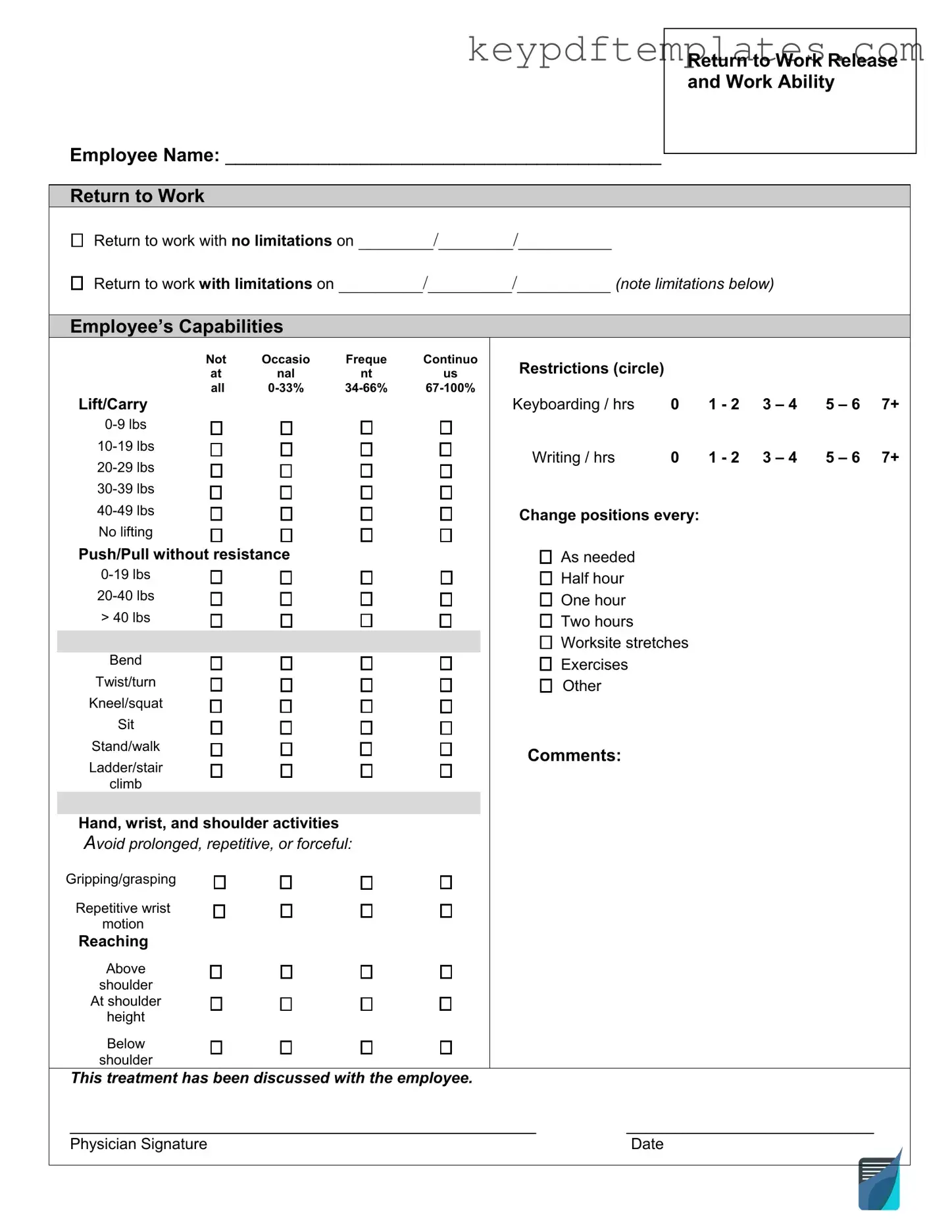Get Work Release Form
The Work Release form is a document that allows individuals to leave a correctional facility temporarily for employment purposes. This form is crucial for those seeking to reintegrate into the workforce while still serving their sentences. By granting permission for work-related activities, the form plays a significant role in supporting rehabilitation and reducing recidivism.
Modify Document Online
